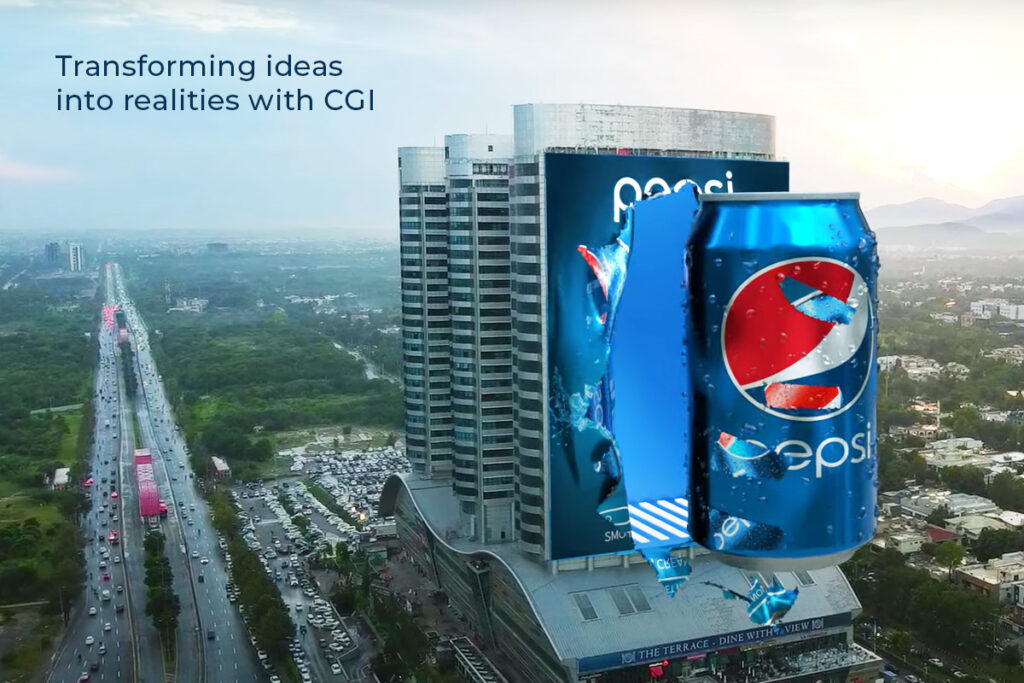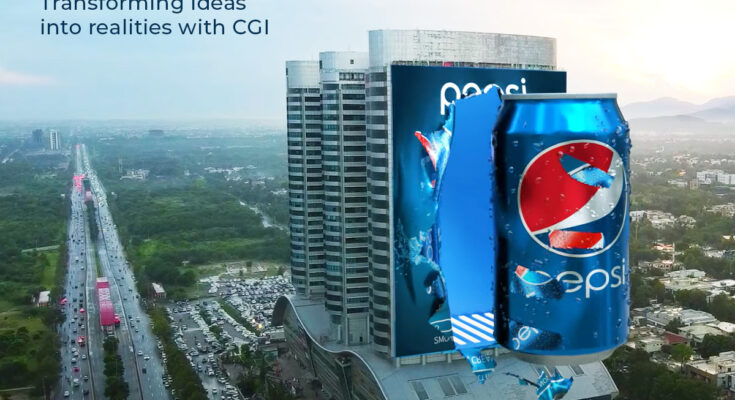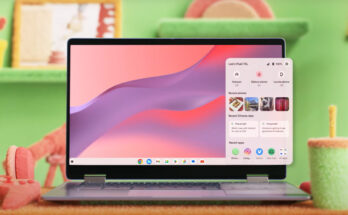As the world of advertising continues to evolve daily being a step ahead becomes a priority in this line of business. Among the most important novelties that began to transform the industry today is CGI or Computer-Generated Imagery. It comes as no surprise that from creating the stunning realism and slick imagery through to the free thinking and creativity CGI has become a vital tool to the advertisers of today. This article goes on to discuss the history of the CGI, how it has reshaped this industry and what this could potentially mean for the future of marketing one’s brand.
Click here: to watch CGI Ads in video

Understanding CGI in Advertising
This paper aims at providing a necessary background on CGI Ads. Computer-Generated Imagery therefore means any still picture or any animated picture which has been developed using a computer. Originating from the filmmaking and gaming world, CGI has found applications in the civil and advertising industries, all because of its potential to produce such an impressive range of appealing visuals. The technology has grown from simple designs to near accurate real life quality imageries that are sometimes hard to differentiate.
In advertising, CGI is applied to weave such schemes as animated product announcements and dreamlike brand narratives in addition to realistic advertisements of products that do not physically exist. Its ubiquity and potential make it the epitome of a marketing tool for both marketers and brands dealing in the contemporary market.
Why CGI is revolutionizing advertising
Several factors contribute to the rising popularity of CGI ads:
Limitless Creativity
Unlike the regular techniques of filming, CGI offers the filmmaker the benefit of getting rid of the reality. Who wouldn’t like to see beauty of a car driving on surface of Mars? Or simply represent a shampoo that turns hair into light streamers of hair? With CGI and specially with CGI, these concepts are not just achievable but they can look incredibly gorgeous. That lets brands think outside a set and props and forget about the real-world physics and laws of motion.
Cost-Effective Production
One reason is that, despite the cost of high-end CGI, it could fare better in other departments like places and actors and transportation. For instance, it is not necessary to move a car to a beautiful location for shooting an advert since through image manipulation, advertisers can create a beautiful backdrop of the scene to suit their shot.
Consistency and Flexibility
CGI assets can be used or modified for other campaigns, and this makes it easier to work with for a company. To give an example, once a product has been modeled in 3D, it can be modified, animated or placed in a different context to the initial one without reconstructing it. For global campaigns in particular the ability to edit and make adjustments is ideal for it is important for a campaign to mirror what is happening in different regions across the globe.
Enhanced Audience Engagement
AR/VR modes like interactive CGI ads in the portal can engage the audiences far better than what conventional forms of ad can do. They offer an audience a way to engage and get involved in the story, making memorable experiences that can lead to brand retention.
Here are some latest CGI Ads : Click to Open
Trends That Define CGI Ads Now
Hyper-Realism
To a large extent, current CGI is done in such a manner that the viewer cannot be able to distinguish between the generated images and the original images. This is especially important for such sectors as automotive, fashion, and real estate, when consumers would like to see lifelike prototypes. For example, in advertising, CGI is applied in the luxury car brand production to make realistic and extremely vivid photo-realistic images of automobile to portray the contours of the car and its features clearly.
Surrealism and Abstract Art
With CGI, brands are able to tread in the land of the enchanting and that which is near impossible. Advertisers can build the image of a dream or some otherworldly experience which can make people curious. This trend is typical for beauty and technological commercials when products are asserted to be revolutionary or even magical.
Personalization and Interactivity
Two key elements when it comes to creating a good content marketing strategy are personalization and interactivity. These are animated moving advertisements that users can fully interact with, examples being the AR filters on Instagram and Snapchat. Furniture stores such as IKEA have used pointers like CGI AR applications which enable clients to visually plan their furniture, combining utility with selling strategy.
Sustainability Messaging
Thanks to more consumer concern for sustainability, many brands now use CGI techniques to save on large-scale shootings. For example, rather than taking products for shooting too far and expensive locations, brands can build such scenes virtually.
Real-life Examples of CGI in Advertisements
Coca-Cola’s Polar Bears
Another great example of CGI affecting brand image is the case of the polar bears from the Coca-Cola commercials. Thanks to complicated details and subtitles, combined with strong emotions, these lovable characters are now associated with the brand’s holiday advertisements.
Apple’s Product Launches
In most of the product commercials, we find that CGI has been used by Apple to display its products. Most of their ads contain smooth animated images showing the forms and usability of devices and combining the best characteristics of technology and graphics.
Old Spice and Its Strange Commercials
Old Spice has a somewhat unique advertising formula with weird, surreal computer-generated animation. From men straddling mechanized horses to Schwarzenegger style mechanical stunts these campaigns are simply meant to engage the viewers by shocking and making them burst into laughter.

Click Here: To watch amazing CGI Ads in Video
Lack of rigor and Ethical issues
Despite its advantages, the rise of CGI ads is not without challenges:
Overuse Leading to Fatigue
That is why, as the usage of CGI increases, there is a possibility for it to become mundane. While this kind of visual style is used often, it gives the ads a polished look and feel, which can frustrate those viewers in search of genuine, realistic content.
Misrepresentation
And walking tightrope between creativity and illusion is rather shaky when CGI is involved. For instance, developing a graphic display that is distorted to the product functionality or performance will help to deceive the consumers.
High Initial Costs
Even though CGI may be cheaper in the long term, good quality CGI entails a sizable outlay in software, hardware and expert labor.
Ethical Concerns
This ability to produce almost life like CGI makes it possible to forge such things as endorsements or to even airbrush models beyond any realistic standard of beauty.
CGI in the future: Advertising
Altogether, there cannot be any doubt that CGI is an excellent tool for advertisers, and that, as technology remains to develop further, there are few indications of the sorts of capabilities which are certainly forthcoming for the use of CGI in advertisements. Here are some emerging trends to watch:
AI-Driven CGI
AI is expected to change CGI in some way since it is capable of performing tasks such as rendering and texture mapping on its own. CGI content can also be customized for the user, so people could get their individual advertisement depending on what they like.
Real-Time Rendering
With the help of current game engines like Unreal Engine, real time rendering is in process. With this technology the advertisers are able to post CGI visuals which can be changed in real time thus enabling the live interactive campaigns.
Incorporation with Metaverse Platforms
Subsequently, as the metaverse evolves, brands will employ CGI as an increasingly significant tool for providing the public with virtual real-life experiences. From online shops to digital product releases, CGI will remain a fungible element in the formation of these brand identities.
Sustainable CGI Practices
Wider public concerns towards sustainable methods of advertising mean that the industry will shift to sustainability through the use of CGI techniques. Advancements that should be expected include cloud-based rendering, as well as software energy efficiency to make CGI production green.
Conclusion
CGI is a revolutionary development in advertising since it has changed the manner in which brands interact with target audiences. Being a technically-inclined company, CGI has brought limitless imagination to bear on new ways to tell stories, captivate audiences and create competitive advantages. Nevertheless, like any instrument, useful in practice, its application must be reasoned, taking into account the true values of the character, ethical concerns, as well as regarding the preferences of the targeted audience.
To the brands that are open to engage this idea, the prospects are unlimited even if it is yet to be fully practiced. CGI is defining the future of advertisement one pixel at a time, always when producing hyper-realistic product demo, surreal stories, and experiences.




